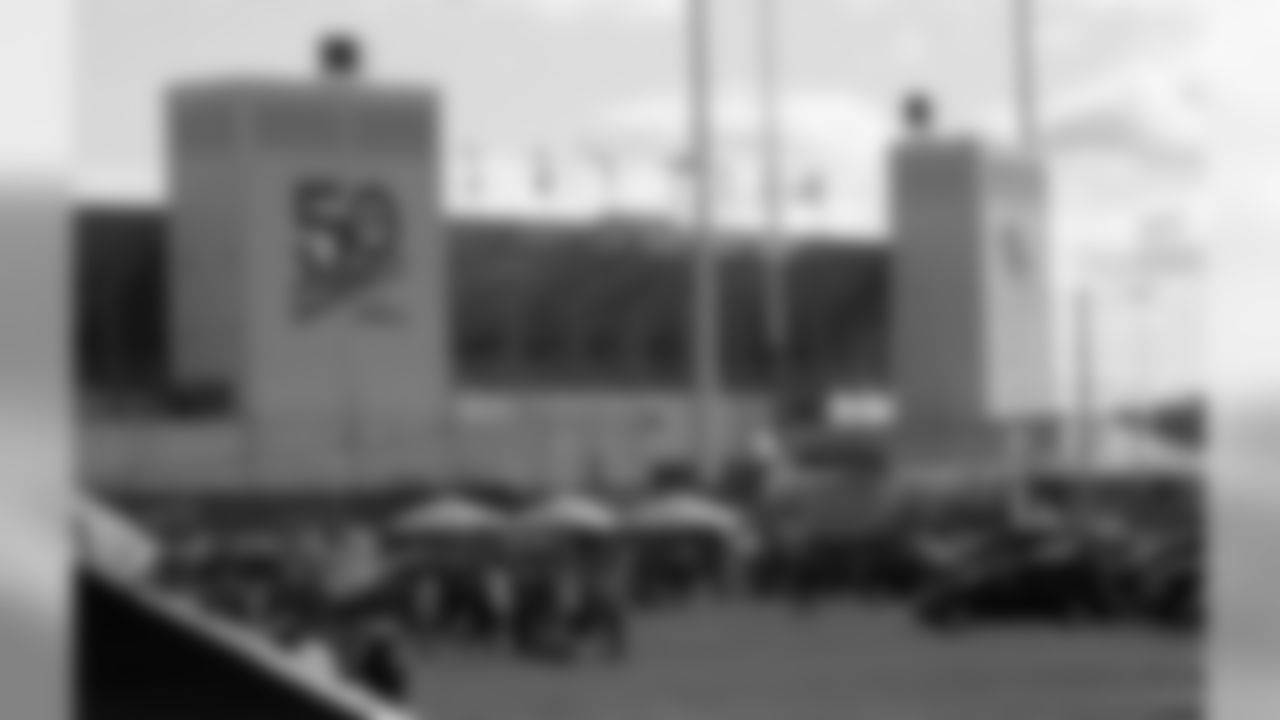A glimpse of the home of the Buffalo Bills throughout history.
















**
Capacity: 71,608
Luxury Boxes: 121 Suites, 8,325 Club Seats
Construction Started: 4/4/72
Area Covering: 197 acres
Officially Opened: 8/17/73
Field Level: 50 ft. below ground level
Upper Deck: 60 ft. above ground level
Surface: A-Turf Titan 50
Restrooms: 135 locations
Drainage: Subsurface pipes
Parking Facilities: 12,000 cars, 300 buses, 250 campers
Current Surface Installed: 2011
Stadium Lighting: Sideline, 180 ft. candles; Mid-field, 300 ft. candles
First Regular Season Game: Bills 9, Jets 7 (9/30/73)
Largest Crowd: 80,368 vs. Miami, 10/4/92
HOME FIELD HISTORY
When the Buffalo Bills began play in 1960, their home venue was War Memorial Stadium. Built in 1936, the "Rockpile" was a 36,500-seat facility located in Buffalo at Jefferson and Best streets. In 1965, the open air, natural grass facility was expanded by adding an upper deck to increase capacity to 46,206.
Years of extreme weather and the popularity of the Bills led to the creation of a larger facility. A 113-acre tract of land approximately 30 minutes from downtown Buffalo was selected and groundbreaking ceremonies were conducted in Orchard Park on April 4, 1972 for the new football complex. To form the lower level of the stadium, more than 370,000 feet of shale were removed – putting the field 50 feet below ground level. Construction was completed in slightly over 14 months and on August 17, 1973, the stadium was officially opened as the Bills played host to the Washington Redskins.
Since the stadium's original construction, the facility has seen many changes. In 1984, the stadium's capacity was increased to 80,290 with the addition of 16 executive suites on the top floor of the administration building. Eight years later, 24 more suites were constructed in the west end zone and shared restrooms were added to the original suites. The Red Zone and Goal Line indoor clubs were added in 1994, offering fans a comfortable atmosphere as each of the two blocks of 500 seats are enclosed in glass. Also in 1994, 14 new suites were added, bringing the grand total to 88 luxury boxes. The 1994 expansion project also brought the team the largest JumboTron in the United States. This mammoth videoboard measured 31.5 feet high by 41.5 feet wide. Some of the capabilities of the videoboard include full-color instant replays, live action shots, crowd shots, out-of-town highlights, animations and various in-stadium shots from cameras exclusive to videoboard usage. In addition, a black and white Daktronics Scoreboard matrix system designed to complement the Sony JumboTron was installed.
RELATED: New Era Cap takes over stadium naming rights for Buffalo Bills; Team to now play at New Era Field
In 1999 crews completed a seven-month stadium overhaul that included constructing 76 brand-new dugout suites and two new enclosed club sections each containing 500 seats. Fans in the dugout suites watch the action just 40 rows from the field. In addition, the Bills replaced 6,800 seats in the sideline club sections with revolutionary contoured heated seats, the first of their kind in North America. Renovations also included four new restroom towers, upgraded stadium lighting and a state-of- the-art sound system.
In 2007, the Bills introduced a new Mitsubishi high definition LED video display scoreboard measuring 33.5 feet by 82.8 feet. The accompanied new HD Digital Screen Controller allowed for simultaneous display of up to three multiple images (or one full screen image). This installation was only the second true high definition display in the NFL, largely as a result of the integral HD Processor used to produce the necessary lines of resolution (1080), to accurately depict an HD image. In addition, the Bills installed over 1,000 feet of Mitsubishi Diamond Vision LED Ribbon Boards on the fascia of the bowl seating areas. The traditional scoring system is encompassed within this state-of–the-art display along with dynamic sponsor ads, player/team statistics and fan prompts.
In 2011, the team installed a new playing surface, A-Turf Titan. It is the top synthetic turf system available and is noted as the industry's top performing system by providing the perfect balance of traction, foot release and unparalleled durability.
In 2013, a $130 million construction project was unveiled that includes renovations and improvements to Ralph Wilson Stadium. Work also includes new technology implementation, a new west end plaza that is inclusive of a new team store and enhanced gate entries, renovated and expanded concessions, restrooms and a training facility. Construction began in May 2013 and was largely completed at the start of the 2014 season.
NEW CHAPTER IN BUFFALO BILLS HISTORY
In 2014, Buffalo's founder and Hall of Fame owner Ralph C. Wilson Jr. passed away at the age of 95, leaving behind a rich legacy. Determined for the Buffalo Bills to remain at home in Western New York, Terry and Kim Pegula purchased the franchise. As the team's second owners, the Pegulas have made a significant impact on the Buffalo Bills and the entire community.
Under their leadership, the Bills' home field has undergone a monumental change. On August 18, 2016, the Buffalo Bills revealed that New Era Cap has taken over naming rights to the stadium and that the team will now play at New Era Field—marking a new chapter in Bills history.













